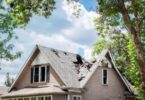Flood Zone:
A geographic location with varying levels of flood risk is a flood zone. The flood zoning is to help people identify how much flood risk is probable in their area. this will help you actually find out what zone requires flood insurance.
People living in flood zones are mandated to purchase flood insurance no matter the level of risk ascertained. You can get flood insurance policies from private insurers. Although, you’ll get to pay less premium with flood insurance from an insurer that is regulated and tags with the National Flood Insurance Program.
Flood Hazard :
More than 20,000 communities are estimated to be inclusive in the flood insurance rate maps(firm) or flood hazard boundary maps, with different zones reflecting the severity of flooding prevalent in those areas.
Flood Hazard Zone Designation
Zone A:
This designation of the Flood Hazard Zone corresponds to the 1-per cent annual chance flooding area over the life of a 30-year mortgage plan. Flood depth or base flood elevations are not available in these areas.
ZONE AE and A1 – A30:
This designation of flood areas corresponds with the base floodplains where base flood evaluation is provided. A Comprehensive hydraulic analysis provides this base flood evaluation result. The results show at intervals within these zones. Homeowners in this zone are mandated to apply for flood insurance.
Zone AH:
This designated flood area corresponds with the 1-per cent annual chance of shallow flooding. They are usually of depth, averaging one to three feet(pond-like). Flood insurance is a mandatory requirement in this zone also.
Zone AO:
This designated Flood area corresponds with the 1-per cent annual chance of shallow flooding. They are characterized by sheet-like flow, especially in sloping terrain. The average flood depth, including alluvial fan flood risk, shows here. It is compulsory to purchase flood insurance in this zone.
Zone AR:
Flood control structures protects areas in this zone from flood hazards . This structures could be either already built or being built. Areas in this zone possess only temporary risk and are still mandatory to purchase flood insurance. The rates in this area for insurance will undeniably lower, especially if the structures built follows floodplain management regulations.
Zone A99:
This designation of flood area also has the 1-per cent annual chance of flooding
How to Know If You Live in a Flood Zone
If you have already purchased the property or you want to. These are some steps you should take to assess the flood risk your home faces or would face and then protect against it.
1.You Should Check with FEMA
You can check the Federal Emergency Management Agency. FEMA has a straightforward tool that can show if your address is within a flood zone. Information like flood zones, flood-ways, and the risk level your home faces will be on their flood map service center. Topographical information concerning flood features like coastal barriers and base flood line is available on the map. You might find it difficult to make much sense from the plan at first glance. So, Proper study will make it easier for you to read. You can check the Flood insurance rate map here
If you want to look up a specific address, visit the website above. Then you have to make sure to enter your property’s location in the upper right-hand corner and click enter on your keyboard. You may also want to change the “Base-map” option on the top left-hand side to a suitable background that will make the map less challenging to read.
The tool is the Flood Insurance Rate Map (FIRM), looks up your property’s flood zone. FEMA maintains and continuously updates the flood maps every five years. When updated, you may find your home re-categorized from a particular flood zone to another. Your home property might then shift to either a higher or lower flooding risk, according to the agency.
2.Make use of Flood sensors
There is also a method to prevent your home from flooding. Flood sensors in home security systems provide water detection that can help use catch flooding early. This flood sensor devices notify you of water leaks from your water heater, washing machine, and weather-related flooding in your basement.
3.Always Keep Track of Changes
Flood zone designations can change over time. This change can because of differences in topography due to new constructions. You should make a plan to check for any modifications in your property’s flood zone Designation, at least once in every five years.
Check more From FEMA Map Service Center





